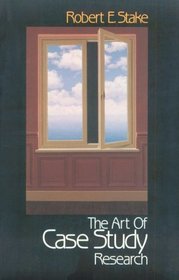Search -
The Art Of Case Study Research
The Art Of Case Study Research
Author:
"The book is a concise and very readable guide to case study research. It includes a good introduction to the theoretical principles underlying qualitative research, and discusses a wide range of qualitative approaches, namely naturalistic, holistic, ethnographic, phenomenological and biographic research methods. . . . Stake offers some useful p... more »
Author:
"The book is a concise and very readable guide to case study research. It includes a good introduction to the theoretical principles underlying qualitative research, and discusses a wide range of qualitative approaches, namely naturalistic, holistic, ethnographic, phenomenological and biographic research methods. . . . Stake offers some useful p... more »
ISBN-13: 9780803957671
ISBN-10: 080395767X
Publication Date: 4/5/1995
Pages: 192
Rating: ?
ISBN-10: 080395767X
Publication Date: 4/5/1995
Pages: 192
Rating: ?
0 stars, based on 0 rating
Publisher: SAGE Publications
Book Type: Paperback
Other Versions: Hardcover
Members Wishing: 1
Reviews: Amazon | Write a Review
Book Type: Paperback
Other Versions: Hardcover
Members Wishing: 1
Reviews: Amazon | Write a Review
Genres:
- Reference >> Education >> Research
- Reference >> General
- Nonfiction >> Education >> Education Theory >> Research
- Nonfiction >> Education >> Education Theory >> Statistics
- Nonfiction >> Social Sciences >> Research




